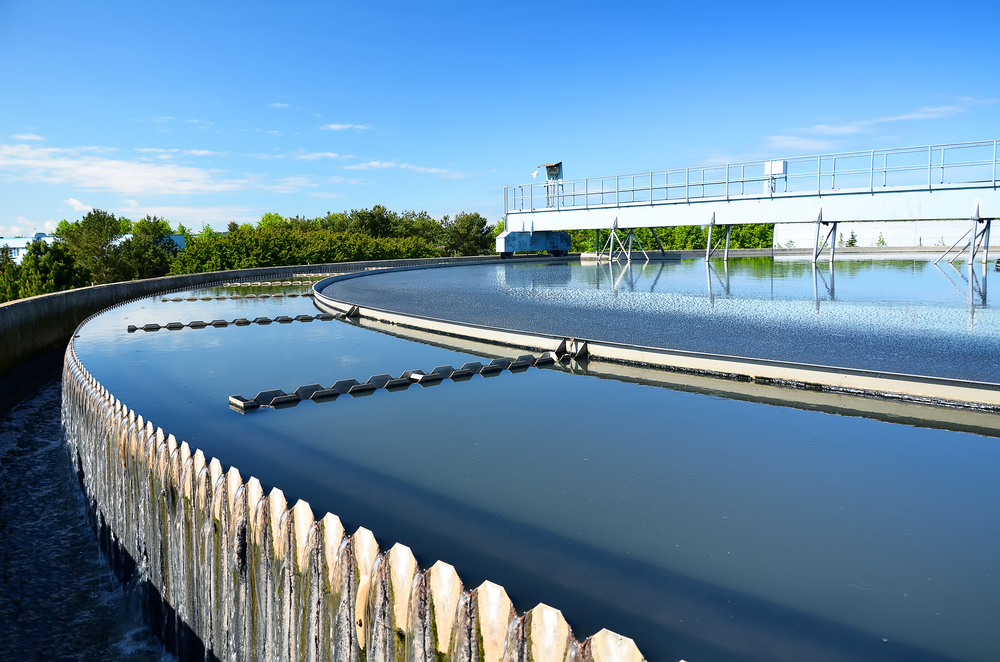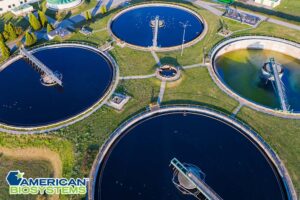Wastewater microorganisms are a safe way to naturally breakdown wastewater. These bacteria work in favor of the environment and reproduce in masses to get the job done of wastewater treatment.
Activated sludge is what is used to put in the wastewater to break it down. It is the dominant bacteria that is best for the environment. As they reproduce, they continue to move along, feeding on the contents of the wastewater.
Beneficial Bacteria and Their Role in Wastewater Treatment
Approximately 95% of bacteria is in wastewater. They all respond to oxygen and are microorganisms only seen under a microscope because they are single-celled. They clump together to make up what we see in forming masses.
We call it “sludge” because the bacteria separate themselves from the liquid and settle, feeding from its clumped-up location. These are some of the good bacteria found in wastewater treatment that feed off of organic materials:
- Algae
- Metazoa
- Protozoa
- Fungi
How to Treat Wastewater
Different types of bacteria are found in wastewater treatment. The three most common are Anaerobic, aerobic, and facultative bacteria. All it takes is to apply the treatment, and the bacteria do the rest.
Anaerobic Bacteria: These forms of bacteria gather oxygen from the food source found in the wastewater. The anaerobic bacteria lower the phosphorus level. As the sludge is broken down, methane gas is produced. The gas is used as biogas, which is an alternative energy fuel for the process of breaking down wastewater.
Aerobic Bacteria: These bacteria use oxygen to break down the contaminants in the wastewater. The oxygen is added mechanically. The aerobic bacteria take the process and turns it into energy which assists with the reproduction and growth of the bacteria.
Facultative Bacteria: This form of bacteria adapts to the surroundings in the environment but can switch between anaerobic and aerobic conditions. The growing bacteria do better with oxygen, but they thrive to survive in either situation.
Wastewater Treatment Process
Biodegradable organic materials are consumed by good bacteria, which include fats, carbohydrates, and proteins, through adsorption. Adsorption is best explained by food particles that cannot pass through the cell membrane, so the bacteria clump together to release enzymes.
These enzymes are what break up the food particles so that the bacteria can consume them. Once it is small enough, it is able to get through the cell membrane.
The Five Steps to Bacterial Growth
When the wastewater microorganisms are placed into the aeration tank, they mix with the wastewater. The water is then known as “mixed liquor.” There are five phases the bacteria go through during the growth process inside the mixed liquor. They are as follows:
- The Lag Phase: Here is where the bacteria adapt to the surroundings in their environment. It produces the enzymes required for the adsorption process. The process will not work if the enzymes are up to par. It is a scene that is set for favorable conditions, so the bacteria must adapt or die.
- Accelerated Growth Phase: There are high levels of nutrients for the bacteria to grow and produce energy. As the bacteria grow, they reproduce at a rapid pace and are in constant movement in search of food in the wastewater. The bacteria do not settle in one spot; once it is done feeding off in one area, it moves on to the next.
- Declining Growth Phase: During the growth phase, a lot of the nutrients in the wastewater are consumed, so the level of nutrients begins to fall. In this stage, the competition begins as the bacteria slow down in growth and reproduction to conserve energy. The remaining nutrients are still used for cell maintenance and energy.
- Stationary Phase: Everything remains consistent, and neither grows and reproduces nor dies out. A thick slimy layer forms outside the cell walls of the bacteria. They continue to clump together, and everything remains neutral as they feed off of what is left in the wastewater.
- Death Phase: This happens when all the nutrients are consumed in the wastewater, and the bacteria die inside the tank. It is a cycle, and the process starts over as more wastewater is put into the tank. More bacteria are placed into the tank, and they feed off of the new mixed liquor until those bacteria die off too.
The Calculation of Food to Microorganisms
When adding the microorganisms to the tank, a calculation for a ratio is figured. The balance is the food in the wastewater to microorganisms and is called the “F/M ratio.”
The amount of food waste is divided by the bacteria required to consume the waste materials in the system according to how many pounds. The process is figured by dividing the outcome of the BOD/COD test by the mixed liquor volatile suspended solids, or MLVSS.
The ratio must be perfect, or issues may arise in the wastewater system. Too many microorganisms will cause waste within itself. The bacteria will clump together, causing backup problems such as foaming, sludge bulking, and floc dispersion.
Likewise, the same results will cause backup issues when insufficient bacteria are in the tank. The cell walls will not be able to be penetrated for the microorganisms to break down the food. The right amount of nitrogen, phosphorus, and organic acids must also be present for the process to take effect.
Adjusting with Bioremediation
If all else fails to work in the process, the F/M ratio is adjusted through bioremediation. This is a process where the wastewater is treated to promote the growth of the microorganisms placed in the tank. All of the following is put into the water system to smooth out the process, which is called biostimulation:
- Vitamins
- Supplemental nutrients
- Organic acids
- Minerals
- pH buffers
American Biosystems has the items to put into the aeration tank that will break down the wastewater in the safest way possible. It is what works best for the environment, and the process and cycle continue over again to ensure everything in the wastewater is entirely broken down.





